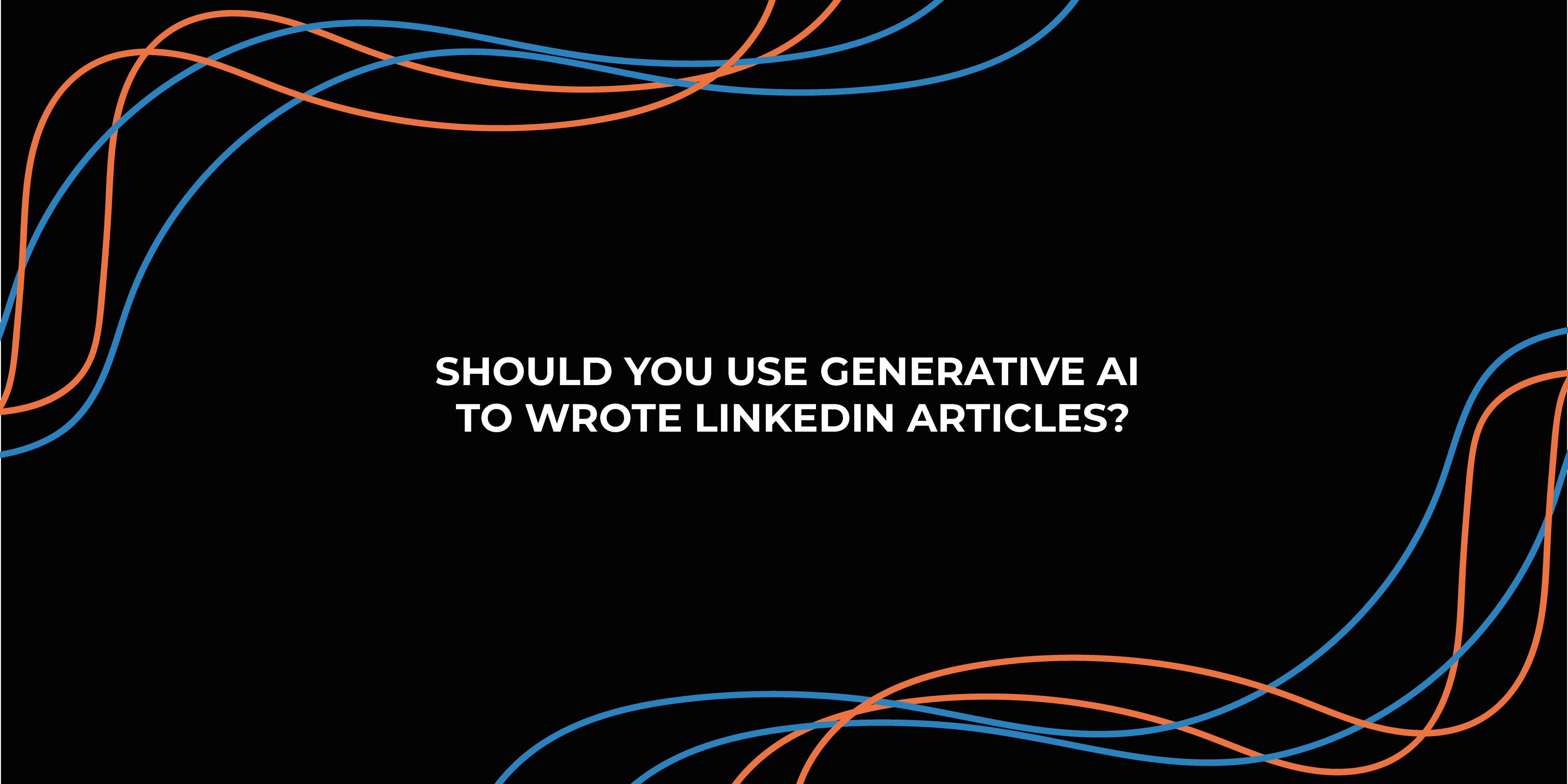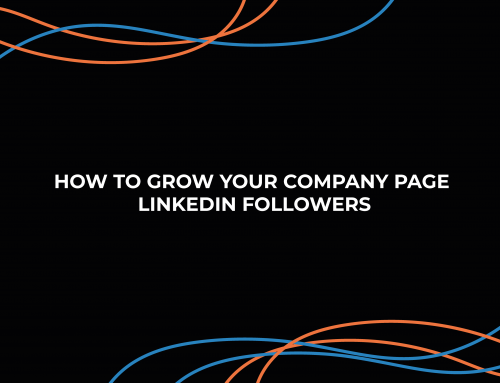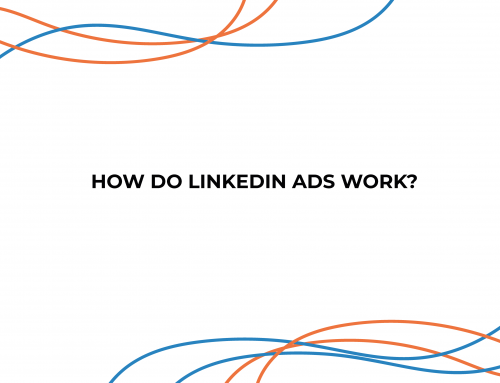Generative AI has become a hot topic of discussion over the past few years, and it’s no surprise why. With its ability to autonomously generate text, images, and even music, it has captured the imagination of both technologists and content creators.
One of the most compelling aspects of generative AI is how it democratises content creation. Traditionally, content creation was often reserved for those with specialised skills or access to expensive tools. However, with the rise of user-friendly generative AI platforms like ChatGPT and Bard, people from all walks of life can now get involved in the creative process. Whether you’re an experienced marketer looking to streamline your workflow or an aspiring writer exploring your craft, these tools provide a level playing field for everyone.
The proliferation of generative AI on social media platforms like LinkedIn has profound implications for personal branding and thought leadership. In an increasingly competitive digital landscape, establishing oneself as a thought leader or industry expert is crucial for career advancement and professional growth. Generative AI enables users to consistently produce high-quality content that resonates with their audience, thereby improving their online presence and credibility.
Its sudden growth is nothing short of spectacular. According to a recent report from European law enforcement group Europol, “as much as 90 per cent of online content may be synthetically generated by 2026”. This proliferation of generative AI across social media platforms like LinkedIn reflects a broader societal shift towards embracing artificial intelligence as a creative tool.
LinkedIn’s introduction of an AI-powered writing tool further underscores this trend, providing users with a quick way to turn their ideas into posts. However, it is important to remember that LinkedIn is a platform built on professional networking and showcasing expertise. While the convenience of AI-powered content creation tools is undeniable, the essence of LinkedIn lies in fostering genuine connections and sharing valuable insights.
This raises an interesting question: Should you use Generative-AI to write your LinkedIn articles? In today’s article, we will take a balanced look at the pros and cons of gen AI to help you make an informed decision.
What is generative AI, and how does it work to create content?
Unless you have been living under a rock for the past thirty-odd years, you will have heard of artificial intelligence. But what exactly is generative AI, and how does it go about creating content?
Generative AI is a special breed of artificial intelligence that can conjure up fresh content, ideas, or solutions based on existing data or previous outputs. It works by taking in information and using sophisticated algorithms to generate entirely new outputs, setting it apart from other AI types primarily focused on data analysis or prediction.
AI-generated content includes various forms of written material like blogs, marketing materials, articles, and product descriptions, all composed by machines. When you want content created, you provide the AI with input such as keywords, phrases, and topics. Then, the AI kicks into gear, scouring the internet to assemble content that fits your specifications. Some tools can even improve existing content by incorporating information from online searches and editing tools, making it more engaging.
The pros and cons of using generative AI to write LinkedIn articles
LinkedIn’s built-in writing tool, LinkedIn Articles, allows users to create and share valuable content with their followers, making it a valuable tool for anyone looking to establish themselves as a thought leader.
Posting articles on LinkedIn offers many benefits for individuals and businesses. Users can publish blog-like content directly on the platform, showcasing their expertise and establishing themselves as thought leaders within the LinkedIn community. From a business perspective, LinkedIn articles provide an opportunity to display organisational culture and brand identity, potentially leading to increased sales and successful talent acquisition. However, the question remains: should you use generative AI to write them?
It is a tough decision. Not everyone has the time or expertise to craft these articles, and tools like ChatGPT can help in generating content quickly and efficiently. Let’s take a look at the pros and cons to help you decide what’s best for your needs.
PROS
Let’s start with the pros. There are two main advantages of using generative AI:
Time-Saving
One of the most significant advantages of using gen AI is its ability to save time. AI can create content much faster than humans, with an article being generated in a matter of minutes. This quick turnaround allows for the creation of a considerable amount of content in a short period.
Cost-Effectiveness
Hiring skilled content writers can be costly, especially for lengthy articles or specialised topics. While investing in quality writers can result in high-quality content, it may strain the budget. In contrast, AI writing tools are often free or available at a lower cost through subscription models, offering significant cost savings.
CONS
While there are a few benefits of using generative AI to create content, there are several drawbacks to using AI for writing articles.
Algorithms devalue content
One of the great things about LinkedIn articles is that they have the potential to appear in search engine results. However, the helpful content update released by Google in August 2022 emphasises the importance of “helpful content written by people, for people.” This update aims to penalise content created solely for SEO purposes. AI tools often prioritise keywords over providing informative content to readers, which can lead to a devaluation of the quality of the content and possibly cause them to be excluded from Google’s search results.
Quality concerns and possible plagiarism
AI relies on data and algorithms to generate content. While AI tools are more than capable of writing about relatively straightforward topics, they may struggle with more subjective topics where the intended tone can be lost.
There is also the risk that search engines flag AI-generated content as similar to existing materials, potentially due to the AI pulling information from the same sources and rephrasing it. Again, this will negatively impact its search ranking.
Human editing needed
While generative AI can save time, human involvement remains essential to ensure accuracy and quality. This includes verifying grammatical accuracy, checking for plagiarism, and making sure all the information included is correct. AI tools collect data from multiple sources into a single piece, which can lead to mix-ups, such as confusing product descriptions with textures and colours due to the AI’s limited understanding of adjective meanings. Correcting these errors can take time, making it more efficient to write the article yourself.
Unable to generate original ideas
On LinkedIn, establishing yourself as a thought leader and developing your personal brand relies heavily on originality. To position yourself as an expert in your industry and captivate your audience, offering unique perspectives is key. If your content just echoes what others are saying, why would anyone choose to connect with you or read your articles?
Generating original and distinctive content for your LinkedIn audience requires your creative input, as generative AI falls short in generating fresh ideas. AI tools rely on existing data, making them incapable of producing original concepts. Therefore, it’s up to you to come up with some unique content to set yourself apart in the digital landscape.
Lack of creativity and personality
Why publish anything on LinkedIn? Because you want your audience to read it, enjoy it, learn from it, and ultimately engage with it. You hope they’ll not only consume it but also like, comment, share, and discuss it with other people they know. However, AI-generated content often lacks the creativity and personal touch needed to engage audiences.
Human readers are naturally drawn to content that sparks their imagination, stirs emotions, or offers a fresh perspective on familiar topics. However, AI’s limitations in understanding context, emotions, and nuanced language make it challenging to produce content that authentically resonates with readers. While AI algorithms are very good at processing vast amounts of data and generating text based on predefined patterns, they often fall short in capturing the essence of human experiences or writing content that evokes genuine emotions.
As a result, AI-written content often feels sterile, formulaic, and lacking in depth or personality. It tends to prioritise factual information over storytelling or emotional appeal, resulting in articles that come across as flat and impersonal – hardly compelling reading material.
Lack of authenticity
While Generative-AI offers convenience in content creation, it’s crucial to consider the platform’s purpose and audience when deciding whether to use it for writing articles. LinkedIn is a platform designed for professional networking and sharing industry insights.
LinkedIn users actively seek content reflecting thought leadership, fostering meaningful discussions, and offering valuable industry insights. They aspire to learn from experts in their respective fields. They want to connect with real people.
With more people using platforms like ChatGPT today, your audience are becoming much savvier and can easily tell when something was written by AI. If you become reliant on AI and use it to write your articles, you risk undermining your credibility and trustworthiness as an industry expert – and if you are trying to establish yourself as a thought leader, it defeats the entire purpose of writing the article in the first place!
Instead of resorting to generative AI, invest time and effort into creating content yourself. If you simply do not have the time to write the articles yourself, or if writing is not in your skill set, consider collaborating with a skilled copywriter who can work with you to produce authentic, engaging content that resonates with your audience and maintains your credibility as an industry expert.
Final thoughts
Although gen AI tools like ChatGPT can be helpful for those with limited writing skills or time constraints, it does have its limitations, including potential inaccuracies, lack of originality, and difficulty in capturing the unique voice of individuals or brands. Investing in human expertise, such as skilled copywriters and professional marketing services, may ultimately provide greater value despite higher costs. This rings especially true for LinkedIn content, where quality directly impacts your professional reputation and credibility.
At StraightIn, our expertise lies in LinkedIn marketing. Our commitment to a hands-on approach sets us apart from other marketing agencies. We take pride in being the only LinkedIn marketing agency to use no automation whatsoever. This approach also applies to how we write articles for our clients.
Each article we write is carefully tailored to reflect the individual voice and objectives of our clients, ensuring it resonates effectively with their target audience. Our content marketing packages are thoughtfully crafted and personalised to meet the specific needs and goals of each client, all aimed at driving meaningful results on the LinkedIn platform.





